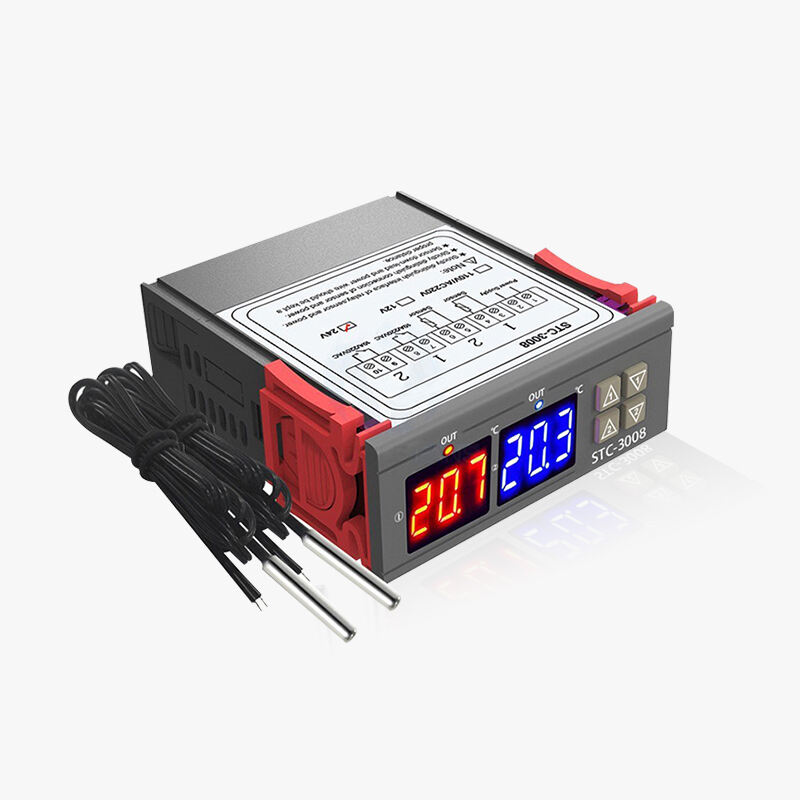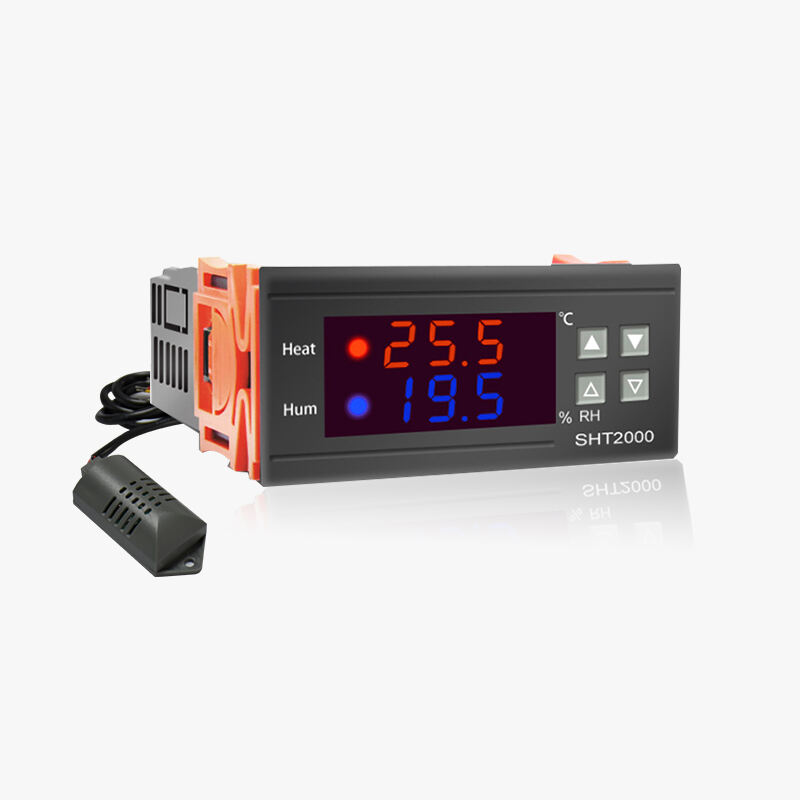Understanding Modern Temperature Control Systems
In today's precision-driven industrial landscape, selecting the right temperature controller has become more crucial than ever. These sophisticated devices serve as the backbone of thermal management across various industries, from manufacturing and food processing to laboratory research and HVAC systems. With technological advancements continuing to reshape the market, understanding how to choose the ideal temperature controller for your specific needs is essential for optimal performance and efficiency.
The market for temperature controllers has evolved significantly, offering enhanced features like adaptive tuning, multi-zone control capabilities, and smart connectivity options. Whether you're managing a complex industrial process or maintaining precise environmental conditions, the right controller can make a substantial difference in your operation's success.
Key Components of Advanced Temperature Controllers
Control Algorithms and Processing Power
Modern temperature controllers utilize sophisticated algorithms to maintain precise thermal conditions. PID (Proportional-Integral-Derivative) control remains the industry standard, but newer models incorporate adaptive tuning capabilities that automatically optimize performance based on system response. The processing power of these controllers has increased dramatically, enabling faster response times and more accurate temperature regulation.
Advanced temperature controller models now feature self-learning capabilities, reducing the need for manual tuning and simplifying the setup process. This technological evolution has made it possible to achieve unprecedented levels of accuracy while minimizing temperature fluctuations and overshooting.
Interface and Connectivity Options
The user interface of a temperature controller plays a crucial role in its operational efficiency. Today's controllers offer touchscreen displays, intuitive navigation menus, and clear visual indicators for system status. Remote monitoring and control capabilities have become standard features, allowing operators to manage temperature settings and monitor performance from anywhere using mobile devices or central control systems.
Integration capabilities have also expanded, with modern temperature controllers supporting various communication protocols such as Modbus, PROFINET, and EtherNet/IP. This enhanced connectivity enables seamless integration with existing automation systems and facilitates data collection for analysis and optimization.

Essential Features for Industrial Applications
Precision and Stability Mechanisms
Industrial temperature controllers must maintain exceptional accuracy and stability across varying operating conditions. Look for controllers featuring auto-tuning capabilities, which automatically determine optimal PID parameters for your specific application. Advanced models incorporate sophisticated algorithms that compensate for environmental changes and load variations, ensuring consistent performance.
Stability mechanisms such as anti-windup protection and feed-forward control help prevent temperature overshooting and maintain tight control even during significant setpoint changes. These features are particularly valuable in processes where temperature precision directly impacts product quality or safety.
Safety and Reliability Features
When selecting a temperature controller, safety features should be a top priority. Modern controllers include multiple alarm functions, sensor break detection, and automatic shutdown capabilities to protect equipment and processes. Look for models with redundant safety systems and UL/CE certifications that comply with industry safety standards.
Reliability features such as galvanic isolation between inputs and outputs, surge protection, and robust construction ensure long-term performance in harsh industrial environments. The best controllers also offer diagnostic capabilities to identify potential issues before they cause system failures.
Sizing and Specification Considerations
Input and Output Requirements
Proper sizing of a temperature controller begins with understanding your input and output requirements. Consider the type of temperature sensors you'll be using (thermocouples, RTDs, or thermistors) and ensure the controller supports these inputs. Output options typically include relay, voltage pulse, or current outputs for controlling heating or cooling devices.
Multi-zone applications require controllers with sufficient input/output capacity or the ability to network multiple controllers together. Consider future expansion needs when selecting controller capacity to avoid costly upgrades later.
Environmental and Installation Factors
The operating environment plays a crucial role in temperature controller selection. Consider factors such as ambient temperature range, humidity levels, and exposure to dust or corrosive materials. Controllers installed in harsh environments should have appropriate IP ratings and protective features.
Installation requirements, including panel space, mounting options, and wiring accessibility, must also be evaluated. Modern DIN-rail mounted controllers offer flexibility in installation while maintaining a compact footprint.
Advanced Configuration and Programming
Custom Control Strategies
Modern temperature controllers allow for sophisticated control strategies beyond basic setpoint regulation. Programs for ramp/soak profiles, cascade control, and custom PID algorithms can be implemented to meet specific process requirements. Look for controllers with sufficient program storage capacity and easy-to-use programming interfaces.
Advanced models support multiple control loops and complex logic operations, enabling integrated control of heating and cooling systems. The ability to customize control strategies ensures optimal performance for your specific application.
Data Management and Analysis
Data logging and analysis capabilities have become increasingly important features in temperature controllers. Look for models that offer comprehensive data recording, trend analysis, and export capabilities. This information is valuable for process optimization, troubleshooting, and regulatory compliance.
Cloud connectivity and integration with manufacturing execution systems (MES) enable real-time monitoring and analysis of temperature control performance across multiple locations. These capabilities support predictive maintenance and continuous improvement initiatives.
Frequently Asked Questions
What is the typical lifespan of a modern temperature controller?
A high-quality temperature controller typically lasts 8-10 years when properly maintained and operated within specified conditions. However, many units continue to function effectively for 15 years or more. Regular calibration and periodic firmware updates can help extend the operational life of your controller.
How often should temperature controllers be calibrated?
Most manufacturers recommend annual calibration for temperature controllers, though specific requirements may vary based on your industry and application. Critical processes or those subject to regulatory compliance may require more frequent calibration, typically every 6 months.
Can existing temperature controllers be upgraded with new features?
Many modern temperature controllers support firmware updates that can add new features or improve performance. However, hardware-dependent features cannot be added through updates. When selecting a controller, consider models with upgrade paths or modular designs that allow for future expansion.
What are the energy-saving benefits of advanced temperature controllers?
Advanced temperature controllers can reduce energy consumption by 15-30% through features like adaptive tuning, smart heating/cooling algorithms, and automated scheduling. These savings are achieved through more precise control, reduced overshooting, and better integration with building management systems.

